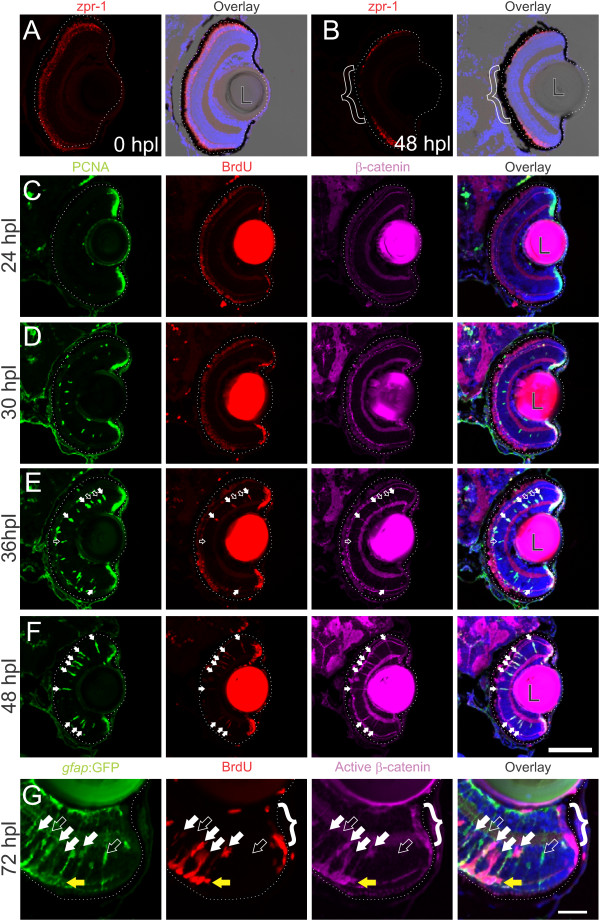Fig. 7 Wnt signaling is activated as Müller glia reenter the cell cycle following intense-light-induced destruction of photoreceptors.Tg(gfap:GFP)mi2002 zebrafish larvae were exposed to intense light at 6 dpf to lesion their photoreceptors. Immediately following exposure, the retina appeared normal, with photoreceptors (double cones labeled with zpr-1) throughout the ONL (A). Within 48 hours post lesion (hpl), photoreceptors are missing from central retina as shown by the lack of zpr-1 staining (B; bracket). (C-F) Light-lesioned fish were incubated continuously in 2.5 mM BrdU and fixed at 24, 30, 36, or 48 hpl. Cells in the INL become PCNA-positive between 24 and 30 hpl, and begin to incorporate BrdU around 36 hpl (C-E). Immunoreactivity for β-catenin is absent from the INL at 24 or 30 hpl (C, D), but begins to accumulate by 36 hpl (E), when all BrdU-positive, PCNA-positive cells (white arrows) and some BrdU-negative, PCNA-positive cells (open arrows) are immunoreactive. By 48 hpl, all of the PCNA-positive cells are also BrdU-positive and β-catenin-positive (F; white arrows). At 72 hpl, BrdU-positive cells in the INL also express GFP, indicating their Müller glial origins, and they are co-labeled with an antibody for dephosphorylated (active) β-catenin (white arrows; G). Proliferative cells are strongly immunoreactive for dephosphorylated β-catenin (open arrow). The cells of the CMZ also exhibit strong immunoreactivity for dephosphorylated β-catenin (bracket). Scale bars A-F: 100 µm; G: 50 µm.
Image
Figure Caption
Acknowledgments
This image is the copyrighted work of the attributed author or publisher, and
ZFIN has permission only to display this image to its users.
Additional permissions should be obtained from the applicable author or publisher of the image.
Full text @ Neural Dev.

